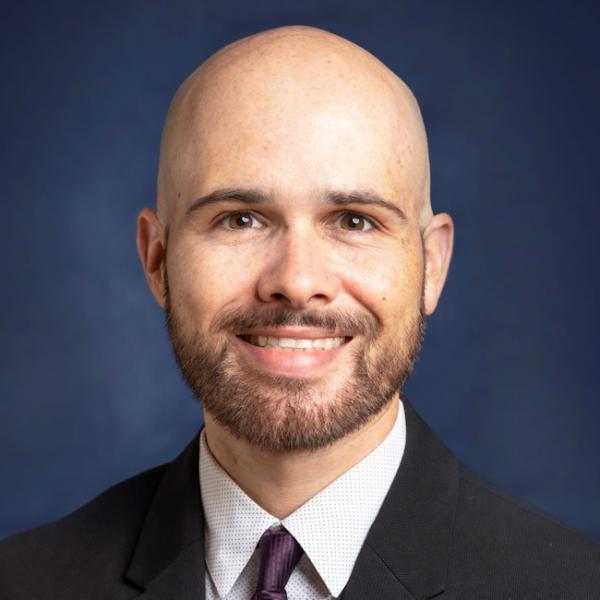|
The Honorable Diana DeGette |
The Honorable Larry Bucshon, MD |
Re: Request for Information on Next-Generation Cures Bill
Dear Representatives DeGette and Bucshon,
Milken Institute’s FasterCures is honored to provide our expert response on how Congress can build on the 21st Century Cures (Cures) Act through the next iteration of the bill by establishing enhanced legislative mechanisms and frameworks to continuously improve the advancements solidified by the original Cures Act.
As a nonprofit, nonpartisan think tank, the Milken Institute believes in the power of capital markets to solve urgent social and economic challenges to improve lives. At the heart of the Institute’s work is the idea that societies prosper with an educated, healthy workforce, open and efficient capital markets, and effective social institutions.
FasterCures is driven by a singular goal: to save lives by speeding scientific advancements to all patients. For the last 15 years, FasterCures has advanced patient engagement in biomedical research by bringing together diverse stakeholders to assess gaps, identify solutions, and develop the tools and resources to support decision-making.
Over the past decade, considerable progress has been made toward integrating patient perspectives and input into biomedical research, as evidenced by the proliferation of legislation, regulatory guidance, and resources to expand patient-centric approaches. The Cures Act has institutionalized the extra push for innovation in R&D, and it has made a sustainable impact, particularly in the medical product development ecosystem, to accelerate patient access to advanced lifesaving medical products.
FasterCures has been at the forefront of the Cures Act's journey from its inception through its enactment and implementation, demonstrating a long-term commitment to this cause. We have worked closely with federal agencies, such as the National Institutes of Health (NIH) and the Food and Drug Administration (FDA), and we welcome the opportunity to share our recommendations for the next generation of advancement through Cures 2.0. Those recommendations center on the following:
-
legislative measures to build and maintain the infrastructures for community-based clinical research and trials, nationally coordinated by a new Office of the National Clinical Trial and Research Coordinator (ONCTRC);
-
effective collaboration between the FDA and the Centers for Medicare and Medicaid Services (CMS) to seamlessly connect approval of and access to the innovative medical products approved by expedited development programs;
-
scientific and systemic approaches to patient engagement in medical product development, approval, and coverage decisions;
-
aligning evidentiary requirements between the FDA and CMS for timely patient access to medical innovation;
-
upholding the preventive service mandate in the Affordable Care Act (ACA) and establishing appropriate reimbursement mechanisms at CMS to boost preventive service utilization; and
-
continuous funding for innovative research programs that fill the gaps of biomedical innovation.
FasterCures is pleased to present the following list: a product of our mission to expedite scientific advancements for all patients and save lives is just the beginning. We look forward to working with your offices to foster accelerated biomedical innovation with patients at the forefront.
1. Legislative Measures to Build and Maintain the Infrastructures of Community-Based Clinical Research and Trials and to Establish a Coordinating Body, the Office of Clinical Trial and Research Coordinator, for National Coordination and Collaboration for Efficient and Representative Clinical Trials and Research
The COVID-19 pandemic revealed that the US did not have sufficient infrastructure close to communities to run trials efficiently and effectively nor to engage potential participants in all the places where they live, work, and get their care. Consequentially, most COVID-19 vaccine studies were performed with overwhelmingly large representation of Whites, while Blacks, Asians, Hispanics, and other minorities were not appropriately represented.[1] In addition, most trials were conducted in academic medical centers, which the majority of patients cannot access.
According to a recent Milken Institute report, clinical trial sites are predominantly located in major metropolitan areas and their suburbs regardless of the diseases and conditions being studied.[2] Most studies are led by research centers, facilities, or university hospitals due to access to equipment, physician expertise, or larger populations of patients.[3] A seminal Institute of Medicine report published in 2010 discussed multitudes of challenges in clinical research, and those identified more than a decade ago still resonate today.[4]
In the federal government, many entities fund, conduct, and use this evidence for decision-making that impacts millions of lives. This evidence needs to be representative of all people and should serve a wide variety of purposes: understanding the health status and needs of Americans, evaluating the safety and efficacy of potential new interventions as well as the effectiveness of existing ones in real-world populations, and elucidating health outcomes and the value of interventions to support reimbursement decisions.
Federal agencies need additional resources to build, maintain, and expand clinical research and trial infrastructure close to communities to ensure access by a broader range of Americans, and a federal-level coordinating body should be established to coordinate existing federal research infrastructure and address the systematic barriers identified.
a. Establish the Office of the National Clinical Trial and Research Coordinator.
The Office may be housed in the Office of the Secretary at Health and Human Services and report to the Secretary, who would appoint the National Research Coordinator.
The roles and responsibilities of this Office could include:
- identifying evidence gaps related to disease burden and high unmet public health needs;
- developing a plan for setting and funding research “challenges” to address the evidence gaps related to high unmet needs, disease burden, and evidence-based interventions in the US population;
- building and maintaining a National Clinical Trial and Research Network Inventory and engaging with industry, commercial research organizations, and public and private partnerships to identify clinical trial network sites to build and maintain the Inventory, including:
-
enhance and expand clinical trial infrastructure and agility by providing technical support and resources to new trial sites in community-based settings, ensuring the capability for evidence generation that meets regulatory standards;
-
develop tools, best practices, and guidance for clinical trial execution to improve trial efficiency and participation;
-
develop the capacity for research entities to do methodologically rigorous, streamlined trials integrated into clinical care;
-
ensure the overall efficiency and effectiveness of clinical trials across the US government, including NIH, FDA, Veterans Affairs, the Agency for Healthcare Research and Quality (AHRQ), the Advanced Research Projects Agency for Health (ARPA-H), Health Resources and Services Administration, Centers for Disease Control and Prevention, Office of the National Coordinator for Health Information Technology, CMS, Department of Defense, and other related agencies; and
-
ensure increased transparency and communications across these federal entities in areas of intersection and where responsibilities fall outside of the authorities of any of the agencies;
- providing an annual report to Congress on the state of diversity in clinical trials (in the absence of this Office, either AHRQ or the Government Accountability Office would be responsible for providing the report); and
- having the authority to be the response coordinator during a public health emergency, quickly deploying trials and identifying and leveraging existing clinical trial network infrastructure. The Office would also work closely with other federal response agencies, including the Administration of Strategic Preparedness and Response, during the emergency.
b. Federal agencies such as NIH, FDA, and CMS need resources to build, maintain, and expand trial infrastructures close to communities to address health equity and diversity in clinical research.
To recruit and retain diverse clinical research participants, it is essential to collaborate with community-serving organizations that are critical infrastructure, well-poised to advance communities’ priorities, and build two-way bridges of support, trust, and education. In order to achieve and sustain such collaborations, we must establish sustainably funded, enduring community partnerships, communication, and engagement to support clinical research that matters to communities, build capacity, and create mechanisms to use community clinics as research sites.[5]
NIH recently launched Communities Advancing Research Equity for Health (CARE for Health) to pilot a national primary care research network, integrating primary care and community-based clinical research.[6] It is a significant step forward to bring research into communities. To continuously build such infrastructure, federal agencies, such as NIH, FDA, and CMS, need resources to support and sustain these efforts. We also believe the Health Equity Innovation Act[7] should be rolled into Cures 2.0.
2. Formalize an Official Communication Channel between the FDA and CMS to Connect Approval of and Access to the Innovative Medical Products Developed by Expedited Programs
The FDA and CMS have tried to improve coordination and alignment since 2010 by establishing a Memorandum of Understanding. Soon after, in 2011, the two agencies jointly launched the Parallel Review Pathway for high-risk medical devices. However, these efforts have since been underutilized for various reasons.[8]
The recent Transitional Coverage for Emerging Technologies (TCET) established by CMS is a pathway for devices designated as Breakthrough Devices by the FDA.[9] Like Parallel Review, TCET uses national coverage determination (NCD) and coverage with evidence development processes to expedite Medicare coverage and provides an evidence development framework for manufacturers with increased pre-market engagement with CMS. The coverage, which starts post-approval and lasts three to five years, is a significant advancement from the Parallel Review Pathway, incentivizing manufacturers and providing critical opportunities to collect real-world data.
a. The FDA and CMS need an official, streamlined collaboration pathway to ensure a seamless connection between approvals and coverage determination. Cures 2.0 should maintain the texts it originally included about the FDA and CMS communication channel, and the TCET pilot should expand to all medical products being approved by the accelerated approval pathway.
FasterCures believes the TCET is a significant step forward in connecting medical product development, regulatory, and coverage decisions. Historically, clinical trials for new medical products may not include Medicare populations due to potential heterogeneity influenced by multiple comorbidities or multiple existing treatments, which could increase the risk of adverse events and non-adherence. With the establishment of the Diversity Action Plan at the FDA, we trust that the representation of the intended US population will become more adequate.
Establishing official communication channels, particularly for all medical products designated for expedited regulatory programs, such as fast track designation, breakthrough therapy designation, and the accelerated approval pathway, will reduce duplicate evidence-generation efforts and accelerate patient access.
We recommend the retention of the provision from the original Cures 2.0 draft Section 305, “Improving FDA-CMS Communication Regarding Transformative New Therapies,” for medical products designated for expedited regulatory programs, such as fast track designation, breakthrough therapy designation, and the accelerated approval pathway.[10] Establishing a legislative pathway for official communication between the FDA and CMS will support effective collaboration between the two agencies and help anticipate certain evidentiary requirements that might be different or similar for each agency.
Additionally, the official channel for communication and alignment should also include scientific, systemic patient engagement for both agencies.
3. Ensure Scientific and Systemic Approaches to Patient Engagement in Medical Product Development, Approval, and Coverage Determination
Scientific and systemic patient engagement throughout the life cycle of medical product development and coverage is imperative to ensure that safe and effective medical products are developed based on patients’ preferences and experiences. The 21st Century Cures Act was instrumental in driving the current focus on patient engagement in medical product development, and more work remains.
a. The FDA needs continuous resources to continue Patient-Focused Drug Development and its relevant activities.
The Better Empowerment Now to Enhance Framework and Improve Treatments (BENEFIT) Act was reintroduced to Congress in early 2023; its provisions should be part of Cures 2.0 so that patient experience and preference data and principles are part of the FDA’s benefit-risk assessments.
Currently, there needs to be a standardized approach to patient engagement activities in medical product development, which makes it hard to prove the impact of patient engagement on clinical outcome measures. Additionally, how patient-reported outcomes, patient experience, and preference data are used for regulatory review and approvals by the FDA depends heavily on each company and its product.
The FDA needs additional resources to create a repository of such data used for regulatory approvals. The repository will accelerate the adoption of regulatory-grade patient-reported outcomes in the clinical development of medical products, adding confidence for new developers, particularly for small and medium-sized enterprises. The repository will also aid international harmonization efforts to cross-germinate patient-focused product development principles globally. Soon, regulatory-grade patient-reported outcomes can also be integrated into electronic health record systems, monitoring patients’ quality of life and experience with particular medical products. Therefore, it will encourage true patient-focused and patient-centered approaches in the health-care ecosystem.
b. CMS needs additional resources to build and maintain scientific, systemic patient engagement processes for national coverage determination and the patient engagement mandated by the Inflation Reduction Act (IRA) for the Medicare Drug Price Negotiation Program (MDPNP).
Engaging partners and stakeholders is at the core of CMS's strategic plan,[11] and it centers on improving the quality of care through a person-centered approach.[12]
The IRA MDPNP mandate requires CMS to consider patient engagement to gain insight into their experience with candidate drugs for price negotiation and alternative therapies. Still, it is unclear how much of the IRA’s allocation would be used for staffing patient engagement activities while the agency is battling with competing priorities for the adequate implementation of the MDPNP. For CMS to build a systemic approach to patient engagement, it needs additional resources to perform scientifically sound patient engagement, build staff capacity, and develop proper measures to gather appropriate and accurate information from the patients, caregivers, and patient organizations.
It is important to note how and where patients place value in medical products, which is often different and must be part of coverage decision-making rubrics.
Currently, CMS’s patient-centricity activities apply primarily to health-care delivery and quality. CMS will make consequential coverage decisions for high-priced advanced therapies such as cell and gene therapies through coverage determinations and value-based payment models. CMS needs a designated structure and staff to build and maintain systemic and better patient engagement processes in NCD, health-care services delivery, quality improvement, and beyond.
FasterCures recommends resources for a CMS Office of Patient Engagement to be developed with a blueprint of learnings from the FDA to facilitate more robust and sustainable patient engagement activities.
4. Align Evidence-Generating Mechanisms and Requirements between the FDA and CMS for Timely Patient Access to Medical Innovation
The expedited regulatory pathways, such as the FDA’s accelerated approval pathway, are essential and should be protected to bring innovative medical products to the finish line and make them available to patients. Continued investment in the real-world evidence (RWE) program will ensure the efficient development and coverage of advanced medical products that are safe and effective.
a. FDA needs continuous funding for the Real-World Evidence Program.
Investment in RWE, observational studies, retrospective studies, and external control arms for clinical trials, in addition to claims data-based trial simulations, dramatically improved clinical trials, particularly for rare conditions affecting small populations. The scientific evolution must continue for new drug approval using RWE, as the evidence can provide tremendous opportunities to complement hard-to-conduct randomized clinical trials with digital twins of study participants, augmenting sensor data to hit endpoints and eliminating placebo control arms, to name a few.[13] The RWE field took a scientific leap to innovation, and it needs continuous support for the future of efficient, effective, and representative medical product development.
5. Uphold the Preventive Service Mandate in the Affordable Care Act and Establish Appropriate Reimbursement Mechanisms to Increase Preventive Service Utilization
a. Uphold the ACA preventive care mandate.
The provision has covered zero-cost preventive care for ACA participants and impacted private and employer-sponsored payers for the preventive care coverage mandate. The provision must continue and be secured to safeguard public health and reduce treatment-oriented health-care spending.
b. Reimbursement policy for routine preventive care and services provided by community health workers (CHWs) and other non-physician providers.
CHWs are currently performing crucial preventive services to communities, particularly active in low socioeconomic status (SES) settings.[14] They provide services including, but not limited to, routine preventive care, such as vaccination, sample collection for diagnosis, lab results follow-up, and outreach to the community for annual exams. There are many successful examples of service delivery by CHWs filling the gaps in access to primary care in remote and rural communities. For example, vaccinations done by pharmacists and Sickness Prevention Achieved through Regional Collaboration (SPARC) models dramatically improved vaccination rates.[15]
However, many are compensated by temporary grants from foundations and government agencies, and the model needs to be more sustainable for CHWs to continuously fill health-care gaps and advance health equity in the US.
These services provided by nontraditional, non-physician, non-nursing providers should be appropriately compensated to encourage health equity and improve health outcomes in the US.
Create Center for Medicare and Medicaid Innovation (CMMI) models to incentivize states to pursue revamping their health-care provision in a prevention-first direction.
CMMI created the ACO Advancing All-Payer Health Equity Approaches and Development (AHEAD) Model to promote health equity for underserved communities.[16] The model encourages participating states to involve all necessary stakeholders in developing a plan to improve care and rewards them for providing high-quality, well-coordinated care to Medicare beneficiaries.
It is essential to incentivize states and provider associations that collaborate with community-based organizations to provide crucial health-care services for remote, rural, and low-SES communities to promote prevention-first health care and health equity.
6. Continue Funding Innovative Research Programs That Fill the Gaps in the Ecosystem
a. Continue legislative support of the Advanced Research Projects Agency for Health.
FasterCures applauds the establishment of ARPA-H within the NIH, which focuses on novel treatments for challenging diseases. We have advocated for such an agency for many years and were pleased to testify to Congress in support of ARPA-H. We firmly believe that an agile, high-impact research agency with a nontraditional business model is needed to complement NIH’s traditional research funding framework to advance genuinely transformative solutions for the public.
Since its launch in March 2022, ARPA-H has created many truly innovative programs, taking on significant technological and systemic challenges. The initial 15 programs embody the range of precision medicine; regenerative therapy; computational and digital science; cell, tissue, and surgical engineering; and innovative health-care delivery.[17]
We live with a plethora of technological and medical innovations. However, we also face a steep wall in scientific advancement, where a giant leap upward is needed to solve tough challenges, such as health inequity, rare diseases, global pandemics, and drug-resistant infectious diseases.
ARPA-H has been off to an impressive start in overcoming the plateau of scientific innovation. We must protect and foster its mission.
b. Ensure funding for the National Center for Advancing Translational Sciences (NCATS).
In 2011, Congress established NCATS to accelerate the development of new diagnostics, therapeutics, and cures for common and rare diseases by supporting the advancement of translational and clinical science—the only NIH Institute or Center with this unique mission. It also supports a network of institutions nationwide through the Clinical and Translational Sciences Awards Program, which builds capacity and conducts translational and clinical research. It is also the home for rare disease research at NIH.
NCATS has been and continues to be an invaluable investment in creating new tools, resources, and approaches to translational and clinical research that have benefited academic researchers and companies across all conditions. Increased funding for NCATS will enable NCATS to make rapid advances in the development of new clinical and translational science and technologies to speed the development of safe, effective treatments for diseases that affect tens of millions of Americans and cost the American economy billions of dollars each year.
NCATS would also benefit from policy changes that would better enable it to demonstrate innovative approaches to R&D. These include removing all restrictions on its ability to support phase III clinical trials and supporting additional capacity for NCATS to push into cell and gene therapy manufacturing, both of which would better enable it to advance its rare disease programs.
Finally, efforts to consolidate NCATS, ARPA-H, and other NIH centers should be resisted without proper vetting, as they have distinctive missions and capabilities.
c. Continue funding for the All of Us research program.
The program was established within NIH through the support of the Cures Act. Its mission is to have a comprehensive and diverse database to advance research toward precision medicine, targeted medicines based on a person’s individual genetic markup, and unique health risks based on their environments.[18]
The All of Us program has demonstrated its value by creating a robust longitudinal data resource that is highly representative of the diversity of the US population and engaging communities historically underrepresented in research. The data snapshot of their research population represents the value of the program.[19] At a time when the ecosystem is striving (and often struggling) to become more inclusive, All of Us has important lessons to teach and has developed relationships and trust with communities that are critical to maintain. In addition, the unique data from All of Us generated many research activities that would have been impossible without such genetic-level population data.[20]
A substantial portion of its funding has come from the 21st Century Cures Act, and as those resources expire, it is facing an imminent funding cliff.[21] We advocate for reauthorizing the funding of the All of Us research program, which advances precision medicine and health equity.
d. Ensure the passage of the Pioneering Antimicrobial Subscriptions to End Upsurging Resistance (PASTEUR) Act to address the financial challenges affecting antibiotic development.
The PASTEUR Act will create a new mechanism for paying for antibiotics, revitalizing the antibiotic R&D pipeline, and bolstering our nation’s ability to prepare for and respond to pandemics, natural disasters, and other biological threats. We recommend the inclusion of the PASTEUR Act in the next-generation Cures Act.
Antimicrobial resistance (AMR) is a significant public health threat often described as a silent pandemic. Many experts believe antibiotic-resistant infections threaten our society more than the COVID-19 pandemic. Over 3 million people in the United States suffer from antibiotic-resistant infections every year, resulting in at least 50,000 deaths.
Globally, AMR is a leading cause of death that has been connected to nearly 5 million deaths in 2019. Without any concerted action, it is estimated that the global death toll from AMR could reach as high as 10 million by 2050. The COVID-19 pandemic has only worsened AMR, with rates of drug-resistant hospital-onset infections and deaths jumping at least 15 percent in the first year of the pandemic alone.
Despite the substantial need for antibiotics, the development of antibiotics has received little investment. The development of antibiotics, like all medicines, takes years and significant resources. Yet, when new antibiotics reach the market, they face a far more uncertain market than other medicines due to low prescription volumes and prices. This combination makes it difficult for an antibiotics developer to sustain the manufacturing and operational costs necessary to keep the drug on the market.
Our research has found that the PASTEUR Act, which outlines a new payment mechanism for antibiotics that delinks payment from volumes, would open the door to new, much-needed investment in this sector because it provides developers with the possibility of a predictable revenue stream.[22] Most R&D in antibiotics today is conducted by small, single-product companies, not large pharmaceutical companies. With every month and year that passes when we do not solve the AMR crisis, these small companies will shutter their doors, and expertise will continue to dwindle as scientists and researchers leave the field.
FasterCures was one of the strongest advocates for the 21st Century Cures Act, particularly for its significant contributions to biomedical innovation, encompassing discovery, development, and delivery. The Act codified many innovative programs in NIH, FDA, and CMS and influenced the acceleration of the science of medical product development.
After nearly a decade, we again welcome the efforts from the offices of Representatives DeGette and Bucshon to continue the legacy of the original Cures Act. FasterCures is committed and ready to be your partner for the next iteration of the Cures Act as we work toward a sustainable future of revolutionary science that is discovered, developed, and delivered with patients at the center.
Sincerely,
Esther Krofah
Executive Vice President, Health
Milken Institute










